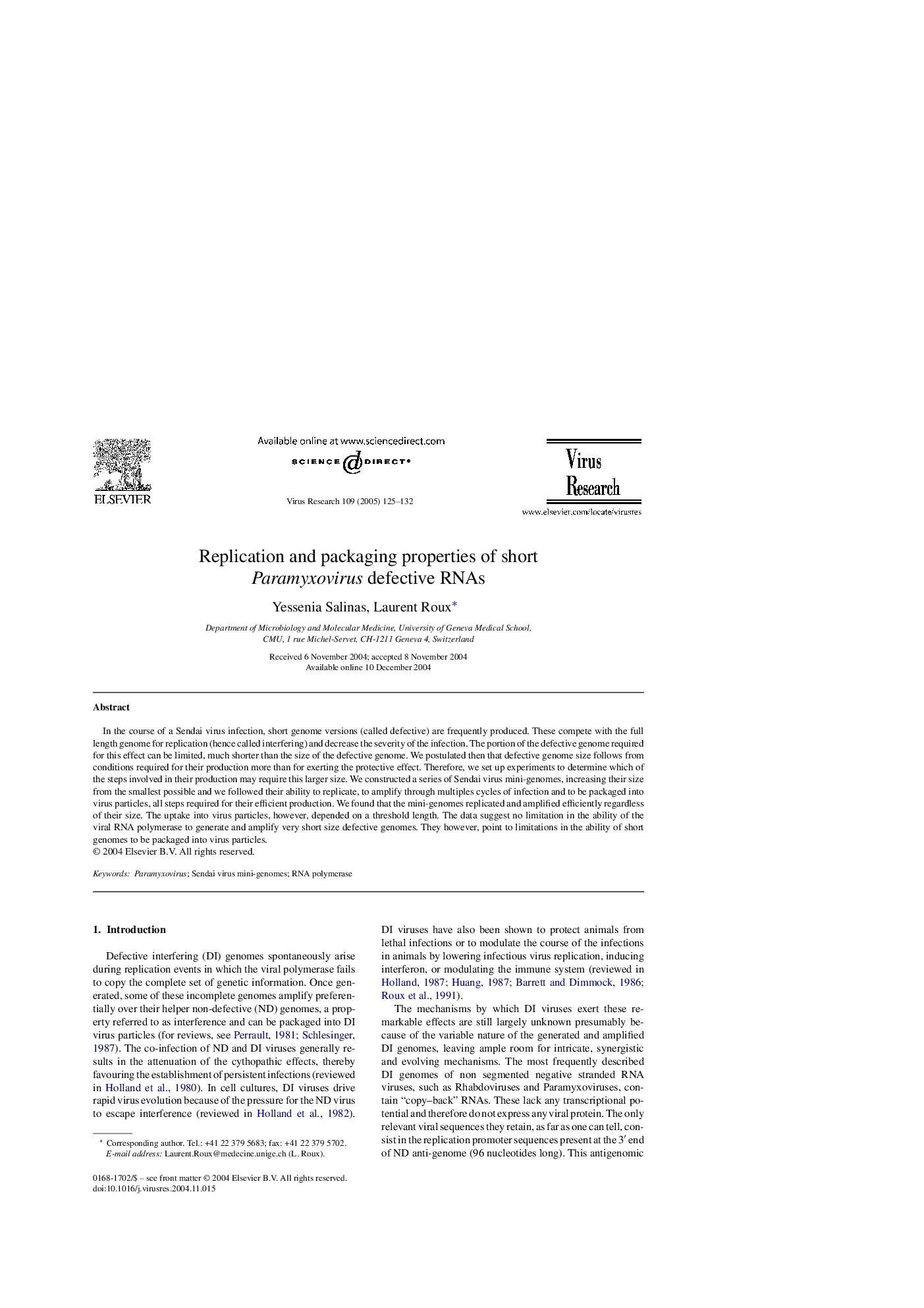| Article ID | Journal | Published Year | Pages | File Type |
|---|---|---|---|---|
| 9289381 | Virus Research | 2005 | 8 Pages |
Abstract
In the course of a Sendai virus infection, short genome versions (called defective) are frequently produced. These compete with the full length genome for replication (hence called interfering) and decrease the severity of the infection. The portion of the defective genome required for this effect can be limited, much shorter than the size of the defective genome. We postulated then that defective genome size follows from conditions required for their production more than for exerting the protective effect. Therefore, we set up experiments to determine which of the steps involved in their production may require this larger size. We constructed a series of Sendai virus mini-genomes, increasing their size from the smallest possible and we followed their ability to replicate, to amplify through multiples cycles of infection and to be packaged into virus particles, all steps required for their efficient production. We found that the mini-genomes replicated and amplified efficiently regardless of their size. The uptake into virus particles, however, depended on a threshold length. The data suggest no limitation in the ability of the viral RNA polymerase to generate and amplify very short size defective genomes. They however, point to limitations in the ability of short genomes to be packaged into virus particles.
Keywords
Related Topics
Life Sciences
Immunology and Microbiology
Virology
Authors
Yessenia Salinas, Laurent Roux,
